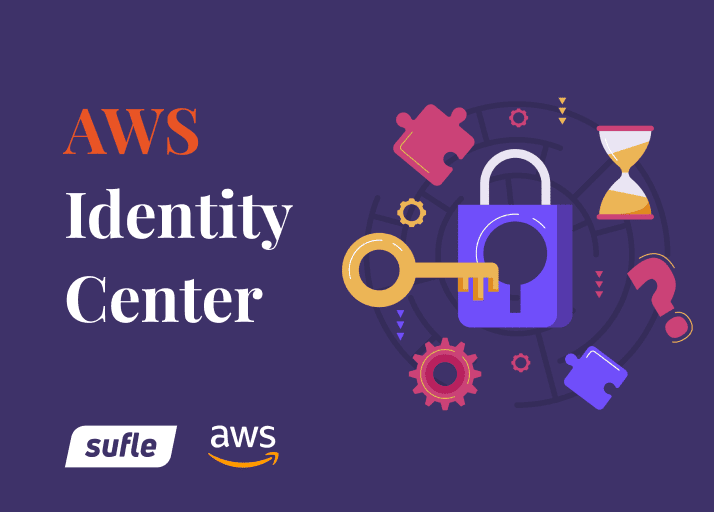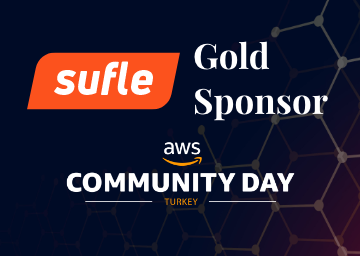In our previous blog post we have talked about how to migrate your workloads to Amazon Web Services (AWS).
Shortfalls in business flows leave around 70% of cloud migration programs stalled all over the world. This is why right planning customised for your business is the key for a successful cloud migration. Today, I want to talk about how you can plan your migration roadmap and how AWS Cloud Adoption Framework will help you on your success.
A successful cloud migration will bring agility, flexibility and better TCO into your business. However, running operations in the cloud completely differs from traditional environments except minor similarities. It requires a different skill set and expertise. In order to achieve all benefits of cloud, your team will need to empower these new skills and may need to apply fundamental changes on some business flows. In the end, you will experience an increase in your business value and reduce the potential risks within your operations.
The AWS Cloud Adoption Framework (AWS CAF for short) helps businesses to design a roadmap for a successful cloud adoption depending on real life experience and know-how built by AWS Professional Services. By applying the AWS CAF, you will create a roadmap with well defined actionable work streams that will guide your all business departments individually on your ongoing cloud adoption project. AWS CAF helps your business to realize measurable benefits from cloud adoption faster with less risk. With the guidance of AWS CAF, your business will understand how cloud adoption transforms the way you work, identify and address gaps in skills and processes.
AWS CAF is guiding your organization to increase the business value more rapidly and consistently while accelerating your businesses cloud adoption process.

Fig.1: Cloud Adoption Acceleration Timeline1
I want to clarify some important points first.
Each business is unique and has different workloads, risks, legacies, performance and resilience needs, security and regulatory requirements. AWS CAF will help you create an action plan tailored specifically for your organization and values.
Whether your organization consists of 5 or 500 people, AWS CAF will guide you regardless of the size of your business.
AWS CAF is not specific to any cloud provider.
AWS CAF is not restricted to AWS use. You can start using it now or an CAF eligible AWS Partner Network (APN) partner like us (Sufle) is able to run it on behalf of you.
You won’t need to re-invent everything while running AWS CAF. AWS and APN partners like us (Sufle) provide various tools and managed services that will help you on every step of your cloud adoption process.
It relies on real life experience of AWS Professional Services.
AWS CAF starts with identifying stakeholders of your business that are critical for cloud adoption. It groups stakeholders into 6 main perspectives. These perspectives enable your business to understand cloud adoption from the view of each stakeholder individually.

Each perspective defines a list of capabilities, which is a set of responsibilities managed by one or more functionally related to stakeholders. Each capability clearly describes what a stakeholder owns or manages in the cloud adoption roadmap.
These capabilities are a standard defined in AWS CAF. Each capability consists of a set of skills and processes that create a path to identify gaps in your businesses existing skills and processes.
While the Business, People, and Governance perspectives focus on business capabilities, the Platform, Security, and Operations Perspectives focus on technical capabilities. So as we can see, this is a huge amount of teamwork.
Let’s identify these perspectives briefly.
Business Perspective focuses on responsible stakeholders to understand how to update staff skills and business processes they will need to optimize business value while operations are moving into the cloud.
Common roles: CFO, Finance Managers, Business Managers and Strategy Stakeholders.
People Perspective provides guidance for stakeholders that are responsible for people development, training, and communications. People perspective guides stakeholders to understand how to update staff skills and business flows they already follow while optimizing and maintaining the workforce and ensuring required competencies are in place.
Common roles: CPO, Human Resources, Staffing, and People Managers.
Governance Perspective focuses on stakeholders that are responsible for supporting business processes with technology. This perspective guides responsible stakeholders to understand how to update the skills and flows to still ensure governance in the cloud while ensuring successful business outcomes.
Common roles: CIO, Program Managers, Project Managers, Enterprise Architects, Business Analysts, Business Development Managers.
Platform Perspective guides responsible stakeholders to understand how to update skills and organizational processes that are necessary to develop, deliver and optimize technical solutions and services in the cloud.
Common roles: CTO, IT Managers, and Solution Architects.
Security Perspective helps responsible stakeholders to understand how to review and update staff skills and business flows that are critical to ensure that the new environment built in the cloud meets the business security standards and compliance requirements.
Common roles: CISO, IT Security Managers and other IT Security Roles.
Operations Perspective focuses on responsible stakeholders to let them understand and update necessary skills and flows to ensure technology operations’ health and reliability during migration to the cloud and then operate with best practices and methodologies.
Common roles: Technology Operations Managers, IT Support Engineers, System Engineers and similar roles.
So depending on these perspectives we can clearly say that cloud adoption impacts businesses beyond the IT Department. Throughout the planning of a cloud transformation, all of these stakeholders will have various types of questions and challenges ahead of them depending on their expertise and responsibilities. Providing answers for these questions and planning are the key for a successful cloud adoption on all business aspects and departments.
The action plan that you create will be based on the six perspectives that we have defined earlier. One or more related stakeholders that have been assigned to each AWS CAF perspective should come together to create an action plan regularly through iterations.
To be able to achieve a success on cloud adoption within your organization, you need to ask specific questions and address concerns for each functional area in order to update skills and processes of your organization as you review each perspective. Easiest way to do that is defining success criterias in every perspective in an organization level and defining the actions to be taken and blockages that may occur for each item.
An example of a Cloud Adoption Action Plan will look like this,

The completed perspective templates outline an action plan for related stakeholders across the entire cloud adoption journey. On the organizational level plan, you may see that the combined set of actions becomes too large to effectively manage and achieve in short terms. Therefore you should review each of the perspective action plans and identify which actions you will complete in the next two-four weeks. After every cycle, you can measure the success of each perspective and review next steps through iterations.
Every stakeholder is aware that cloud transformation is going to be done and you are building your CAF Action Plans. Now you will need a healthy working organization to make this transformation happen and keep it on track.
When it comes to business plans, things do not always happen straight to the point. To overcome difficulties and bring agility into the cloud adoption process there are 7 key elements that will help you achieve your goals.
An Executive Sponsorship role will bring all stakeholders together to align them on business needs and support transformation on every business aspect.
A well defined and documented Cloud-First Strategy will convince business teams of cloud adoption outcomes and incentivize them following the leads.
Organizational Change will happen. You should define new business flows, new operating models, training programs and new financial measurement methods to let your business run while moving to the cloud.
A Cloud Center of Excellence team or department with experienced peers will help and guide internal teams and other departments while providing centralized cloud experience.
Your teams should Experiment with new tools, flows and operating models so they will gain courage and experience to run ongoing operations on cloud. You can achieve this by providing guidelines, documentation, training and test environments on cloud.
Principles and Standards will guide your teams how they should build, measure, monitor and iterate over new cloud environments.
An Adoption Roadmap will keep all stakeholders on rail while migration goes on. Instead of long term plans you should start small, iterate and measure the outcomes. You will continuously build up new plans and update them depending on business needs. Also small but continuous achievements will result in better motivation in business teams.
If you are looking for more detailed information you can also read following AWS CAF Whitepapers or watch AWS re:Invent sessions.
AWS Cloud Adoption Framework (CAF) https://www.slideshare.net/AmazonWebServices/awsws-ccloud-adoption-framework-caf
AWS Cloud Adoption Framework (CAF) https://aws.amazon.com/professional-services/CAF/
The AWS Cloud Adoption Framework: Creating an Action Plan https://d1.awsstatic.com/professional-services/caf/AWS_CAF_Creating_an_Action_Plan_Nov2017.pdf
You want to move your business into the cloud and now you’re ready for building up your first AWS CAF Action plan. If you are looking for experienced peers to achieve successful cloud adoption we are always happy to assist your teams and ensure your success. Sufle is a AWS CAF eligible APN Partner with years of experience with cloud migration projects. Book an Appointment now!
An AWS Certified Solutions Architect Professional, Barış has 10+ years of experience in cloud services and cloud operations in various business verticals. His enthusiasm for learning and sharing more about technology involves mentoring businesses and creating technical content for tech-savvy professionals and communities.
We use cookies to offer you a better experience.
We use cookies to offer you a better experience with personalized content.
Cookies are small files that are sent to and stored in your computer by the websites you visit. Next time you visit the site, your browser will read the cookie and relay the information back to the website or element that originally set the cookie.
Cookies allow us to recognize you automatically whenever you visit our site so that we can personalize your experience and provide you with better service.


